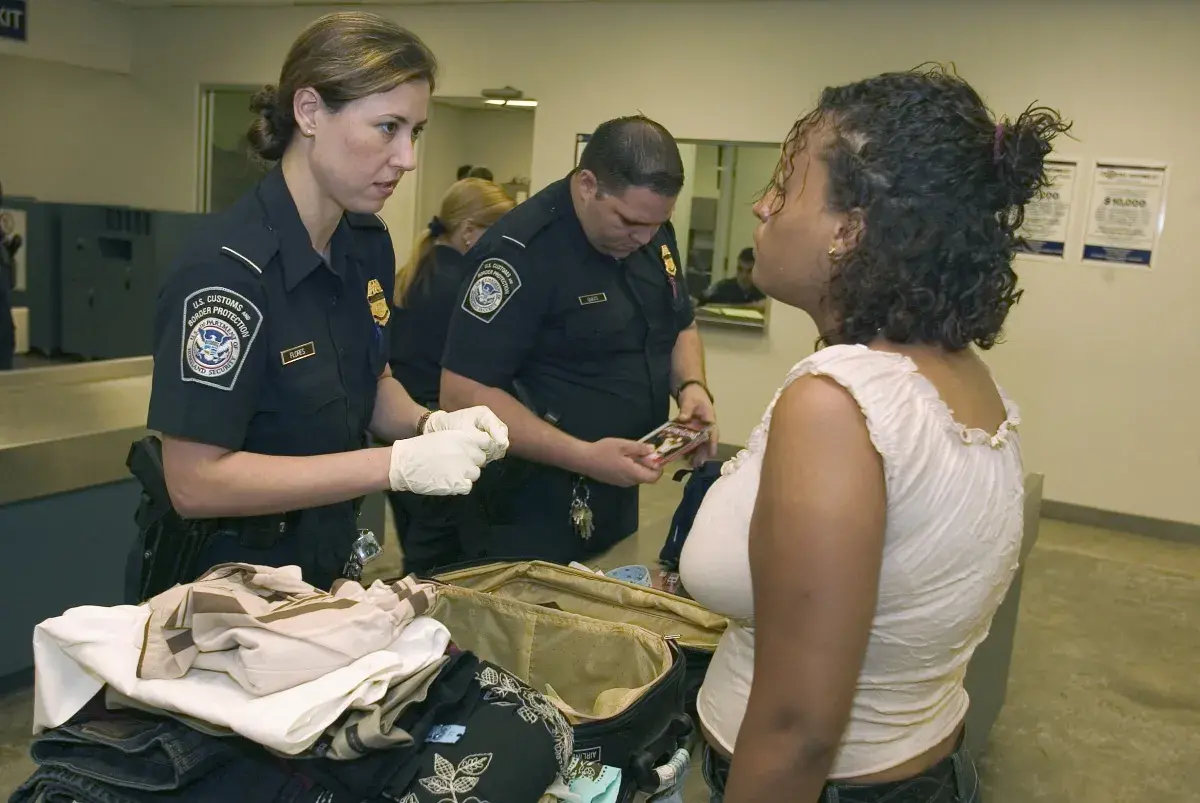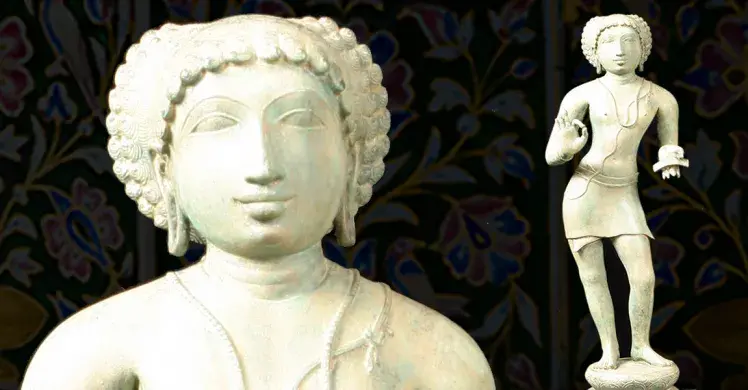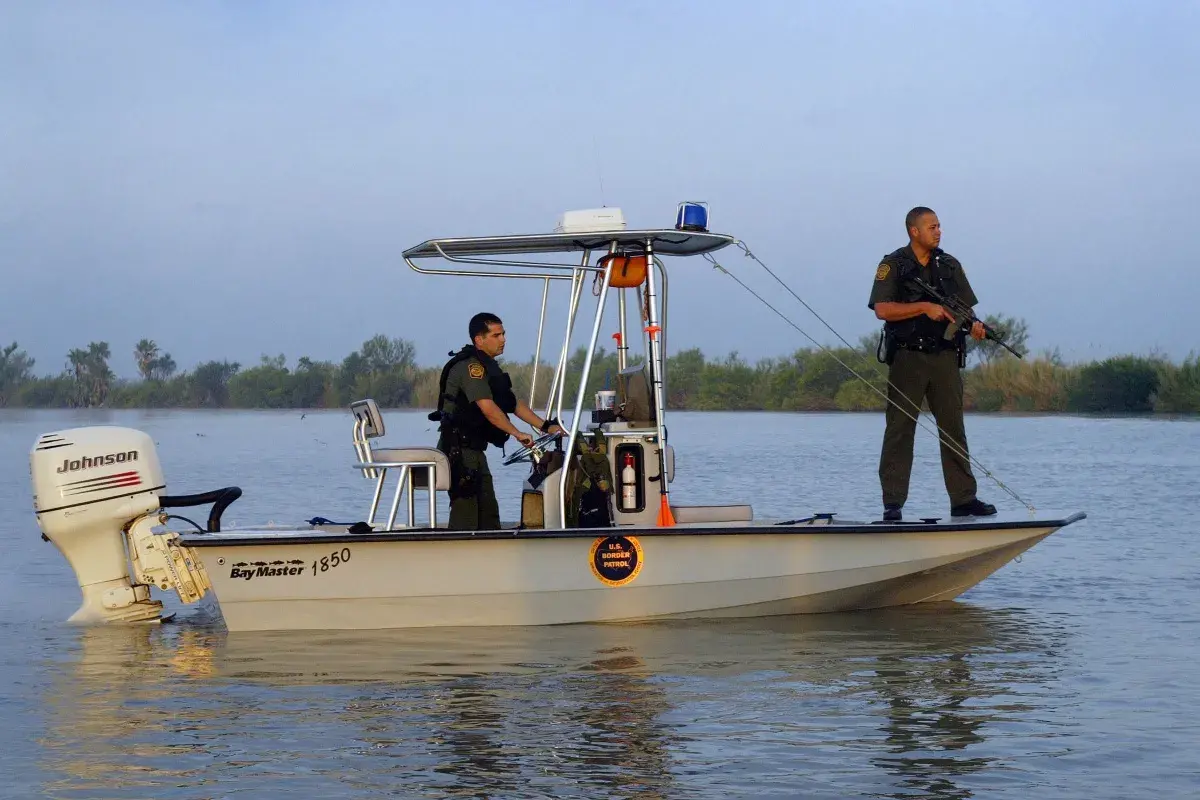For as long as there have been illegal goods, there have been those trying to sneak them past authorities. Explore how DHS detects and systematically dismantles vast smuggling empires.
The Fleet’s On Fleek 
Much ado has been made recently about the flow of drugs over land crossings into the Southwestern United States. Though, not long ago the buzz centered on drugs coming over sea on go-fast boats into South Florida. Today, the drug war looks a lot more like Sicario, making Miami Vice look quaint. While 80s-style pastels have made a comeback, 80s styles of getting drugs into the country have not.
Why?
Operation Bahamas, Turks and Caicos (OPBAT) was set up to combat drug smuggling to and from the Bahamas. The task force, based out of U.S. Embassy Nassau, is comprised of elements of DHS components the U.S. Coast Guard and U.S. Customs and Border Protection's (CBP) Air and Marine Operations, the Drug Enforcement Administration (DEA), the U.S. Department of State, the government of the Commonwealth of the Bahamas, and the government of the Turks and Caicos Islands.
This partnership has left an undeniable footprint in the overall strategy to combat the flow of narcotics, particularly in the Caribbean. It has denied traffickers the ability to operate effectively in the Bahamas and remains one of the most successful drug interdiction efforts overseas.
The task force is responsible for initiating and prosecuting law enforcement cases in the Bahamian area. One such case came in September 2015, when the OBAT Task Force seized $2.5 million worth of marijuana and arrested those involved.
Here’s how that case went down:
- Over three separate nights, CBP Air and Marine Operations aircrews aboard DHC-8 aircraft observed suspicious go-fast vessels speeding through waters in the southeast Bahamas.
- Surface and air assets were then dispatched to pursue and apprehend the suspected smugglers. Among them, a U.S. Coast Guard-deployed MH-60 helicopter aircrew to support DEA and DEU agents during the interdictions.
- 2,842 pounds of narcotics were seized, two smuggling vessels and a vehicle were taken into custody, and a total of six suspects were arrested.
- The seized go-fast vessels and contraband were escorted to Nassau, Bahamas, for further processing.
The secret weapon in OPBAT’s effectiveness is in the diverse capabilities of its Federal and multinational component partners. For example, CBP’s Air and Marine Operations applies advanced aeronautical and maritime capabilities and employs a unique skill set to preserve America’s security interests. The other partner organizations are similarly gifted with unique strengths. The result is OPBAT’s ability to quickly adapt to the ever-changing tactics of narcotics traffickers.
Before they get anywhere near the Homeland, this seamless and effective partnership acts as a powerful deterrent for smugglers who would flood America’s East Coast with drugs. Thank OPBAT for Miami Vice’s obit.
DHS Components Involved
Not Worth the Air Miles 
Job Opening: Courier. Skills Required: Ability to swallow baby carrots whole. Employee Benefits: Frequent all-expenses paid travel to the United States. Employer: The Castillo Drug Smuggling Organization (CDSO).
This is essentially the sales pitch made by Higinio Castillo to those he recruited into serving as his mules to ferry narcotics from the Dominican Republic into the United States. Between November 2010 and March 2012, Castillo imported more than eight kilograms of heroin and more than one kilogram of cocaine using the digestive tracts of his fellow countrymen.
Here’s how his scheme worked:
- Castillo’s brother manufactured the cocaine and heroin and packaged them into swallowable packets. Couriers were forced to swallow up to a kilo of these.
- The CDSO paid the couriers' travel expenses and helped them obtain U.S. passports.
- CDSO personnel drove them to the airport for their commercial flights to either Philadelphia International Airport, Newark Liberty International Airport, or JFK International Airport.
- Once the couriers made it through U.S. Customs screening, they were whisked way to nearby CDSO-controlled properties where they would “pass” the drug pellets out of their bodies.
- The drugs would then be repackaged for sale, and CDSO personnel would drive couriers right back to the airport for their return flight to the Dominican Republic.
Higinio Castillo, and the bellicose band of 10 others that made up his operation, was paranoid and often brutal towards those couriers who he believed were stealing the smuggled drugs. To enforce their system, the gang would intimidate and threaten the couriers, often with violence. In September 2011, one of the couriers had not shown up at the airport as they were supposed to. In response, members of the gang attempted to locate the courier by forcing their way into her home with a gun. Unable to find her, they then attempted to kidnap her children for ransom; thankfully, they did not succeed.
It was during another such incident that U.S. Immigration and Customs Enforcement’s (ICE) Homeland Security Investigations (HSI) became aware of Castillo’s drug smuggling ring. On August 24, 2011, one of the courier’s—known as “S.R.” showed up at the airport without his shipment of drugs. The gang members drove him to a home on 19th Street in Philadelphia where Castillo was waiting. There, S.R. was bound, beaten, and brutally interrogated. Castillo wanted to know where his drug shipment was, and he was willing to use any means necessary to obtain this knowledge. He made threats against S.R.’s life, and even discharged a firearm at close range to his head. That made S.R. finally talk, and what he revealed was that the joke was on Castillo and the rest of the CDSO.
Earlier that day upon his arrival into Philadelphia, S.R. was detained by U.S. Customs and Border Protection (CBP) agents who discovered his opioid-filled orifices. After confiscating his drugs, CBP contacted HSI who took over the investigation into the drug smuggling ring.
HSI’s subsequent investigation, with the assistance of the Philadelphia Police Department, brought about the complete dismantling of the Castillo Drug Smuggling Organization. Haginio Castillo and his compatriots were arrested. On April 29, 2014 he plead guilty to 13 charges, including conspiracy, kidnapping, firearms, and numerous drug charges. He’s since been sentenced to 20 years in prison for running the large-scale smuggling operation.
DHS Components and Offices Involved
Privateer of The Priceless 
Auction houses have always been the domain of the elite, the illicit, and a fair amount of intrigue. During the Cold War, proceeds from auction sales were used to launder under-the-table payments to Soviet spies working undercover in the West. Today, this auctioneer’s game of cloak and dagger is being played to cover up something else entirely: the origins and histories of the artifacts on sale.
For the art and antiquities world, history is everything. There is a saying among archeologists: a common watch today is worthless, but bury it in the sand for 1,000 years and it becomes priceless. Priceless for archeologists, perhaps; but for the antiquities collector there’s a price for everything—and it’s usually steep. To protect their investments, the industry has self-regulated into creating what’s called a “provenance.” Much like the chain of title for a home, it accounts for every link in the chain of an artifact’s ownership, from its remote origins to the auction hall. This helps to ensure the buyer that the pieces being bought are indeed authentic, and that they have been acquired by legitimate means.
Provenances, however, are not airtight, and—with enough effort—can be cleverly forged. So it was in the case of a Chola bronze statue of Saint Manikkavichavakar. Dating back to the 11-12th century, the statue was stolen from the Sivan Temple in Tamil Nadu, India. The present owner, an anonymous collector of Asian antiquities, bought it at auction in 2006 and has since surrendered it into the custody of U.S. Immigration and Customs Enforcement’s (ICE) Homeland Security Investigations’ (HSI) cultural property unit; after which, it was returned to it’s rightful owners, the Indian people.
This is just the latest case in an ongoing international smuggling probe by HSI. Dubbed “Operation Hidden Idol”, it’s an investigation into the activities of a former art dealer by the name of Kapoor and his front for peddling stolen relics, the Art of The Past Gallery in New York.
Here’s how Kapoor’s scheme worked:
- Kapoor paid members of his organized smuggling syndicate to steal religious relics from temples and other cultural sites all over the world.
- These artifacts were then smuggled through numerous countries to establish a false chain of ownership
- These false provenances showed a chain of ownership that stretched back before the date the antiquity was actually stolen. This, in an attempt to make it seem as though the artifact in question and the artifact known stolen could not possibly be one in the same.
- The artifacts were then shipped into the United States along with the false provenance.
- Armed with these elaborately forged provenances, Kapoor was allowed to sell these objects at auction.
In addition to the cultures whose cultural property is stolen, the collectors duped into buying them are also victims. Recall the stolen idol of Saint Manikkavichavakar. Kapoor received hundreds of thousands of dollars upon its sale in 2006. If put back on the market today, the idol would fetch over $1 million. The collector who bought it, however, was forced to surrender it to HSI without compensation, or otherwise potentially face charges for possessing stolen property.
Kapoor is currently in custody in India awaiting trial for his crimes. Many of the objects he looted, however, are not yet back in safe hands. This is where Operation Hidden Idol comes in.
HSI special agents have executed a series of search warrants targeting Kapoor’s Manhattan gallery, along with warehouses and storage facilities linked to him. The searches have yielded information that is now allowing HSI to track items from the site of their theft to their present whereabouts within the United States.
The results (so far) of Operation Hidden Idol:
- Two domestic museums, the Honolulu Museum and Peabody Essex, have partnered with HSI to surrender illicit cultural property stemming from Kapoor.
- HSI special agents, in conjunction with the Manhattan District Attorney’s office, have recovered more than 2,500 artifacts linked to Kapoor worth over $100 million.
- HSI has recovered at least six other sacred Chola bronzes that it anticipates forfeiting and repatriating to the Government of India.
- Three individuals have been arrested in the United States for their role in the scheme.
“The theft of another country’s cultural property is a terrible crime that robs a nation of its national heritage,” says the Special Agent In Charge of Operation Hidden Idol.
Thanks to HSI’s on-going work, this heritage is happily returning home.
DHS Components and Offices Involved
Serpentine Streams and Streams of Smugglers 
When you think of border security along the Southwest border, your mind is likely to conjure up a scene or two from Breaking Bad: desert landscapes, fences, patrol Humvees, rows of commercial trucks being inspected, drug cartels, drug tunnels, drones; the list goes on. But what we often overlook is that much of the border is not arid, but aquatic.
The Rio Grande River delineates the border between the United States and its neighbor to the south, Mexico. “Grande” is an understatement. This river border begins near Yuma, Arizona, running 1,250 miles through streams, creeks, lakes and rivers to the mouth of the Rio Grande at Brownsville, Texas.
As along any part of the nation’s borders, criminals look for and exploit weak points to smuggle drugs and undocumented noncitizens/persons. U.S. Customs and Border Protection (CBP) is responsible for adapting to and countering these threats. The same is true for the Southwest water border, although, there are certain geographical and ecological features that make patrolling this part of the border a unique challenge:
- Depths range from just a few inches in most places to more than 200 feet in Lake Amistad, Texas.
- While several hundred miles of the Southwest water border are deep enough for boats, the waters there are rocky and difficult to navigate.
- Obstructions, like rocks and other hazards, emerge and disappear with irregularity as currents and depths change, often by the hour.
Manmade factors create other challenges for CBP officers and Border Patrol agents patrolling these waters. One example is the dam on the Rio Grande at Lake Amistad. Waters downstream from the dam are shallower and more irregular than in other parts of the Rio Grande system. River conditions are constantly in flux depending on the amount of water being released from the dam at any given time. At certain times, river depth is mere inches; at others, it can be as deep as 3 feet. As these water levels fluctuate, so does the course of the river itself. When the waters are low enough for submerged obstacles to surface, they push the flow of the river around them, changing its course. CBP officers not only have to stop dangerous criminals from crossing this river into the United States, they also have to contend with the dangers of a river that changes from one minute to the next.
To effectively patrol these waters, CBP assembled an elite Riverine Force. The force coordinates with land-based agents as well as CBP's Air and Marine Operations, and is made up of U.S. Border Patrol agents specifically trained for these ever-fluctuating conditions.
The Riverine Force also comes equipped with a fleet of watercraft specifically designed to thrive in these unpredictable waters:
Airboats are used exclusively in the shallow waters of the Southwestern water border downstream of the dam. These vessels carry two to three agents, depending on the mission. They are remarkably quiet, allowing officers to get in close range of criminals attempting an illegal crossing. If pressed, they can fly across the surface at speeds up to 45 miles per hour.
Border Patrol V-hull Safe Boats are larger and louder and resemble patrol boats used by the U.S. Coast Guard. They patrol deeper border waters such as those of Lake Amistad. Even the sight of them (as well as their sound) act as powerful deterrents for those attempting to cross. Those who try have been known to immediately turn around toward the Mexican side of the lake upon hearing the sound of one of these boats approaching.
The Riverine Shallow Draft Vessel will soon enter service alongside the others. Unlike the others, however, it uses a water jet propulsion system, allowing it to nimbly navigate the rocky shallow waters below the dam without the risk of propeller damage. Like the Airboat, it can operate in as little as 4 inches of water, but offers greater stability and crew safety.
These special riverine craft are also supported by helicopters operated by CBP's Air and Marine Operations. CBP helicopters are uniquely capable of covering large swaths of this vast border territory in a relatively short amount of time. In one notable instance, CBP's Air and Marine helicopters helped to intercept $500,000 worth of marijuana from entering the country. The marijuana, 28 bundles of it in all, was being floated across in a raft from the Mexican side of the river near Rio Grande City, TX. Despite the strong currents in this part of the Rio Grande, the raft--loaded down by five men and 600 pounds of the drug--could not move very quickly. A CBP helicopter--part of the McAllen Air Branch--spotted the suspicious craft. As it moved in, the smugglers aboard the raft heard the blades of the helicopter cutting through the air toward them. Reflexively, they hastily abandoned the raft--and the drugs--and swam back to Mexico before they could be apprehended for illegal entry. The drugs, however, were intercepted by a U.S. Border Patrol watercraft and turned over to the Drug Enforcement Administration.
The waters along the Southwest border may change by the minute, but CBP’s mission remains constant: protect the Homeland from those so nefarious they need to enter it illegally.
